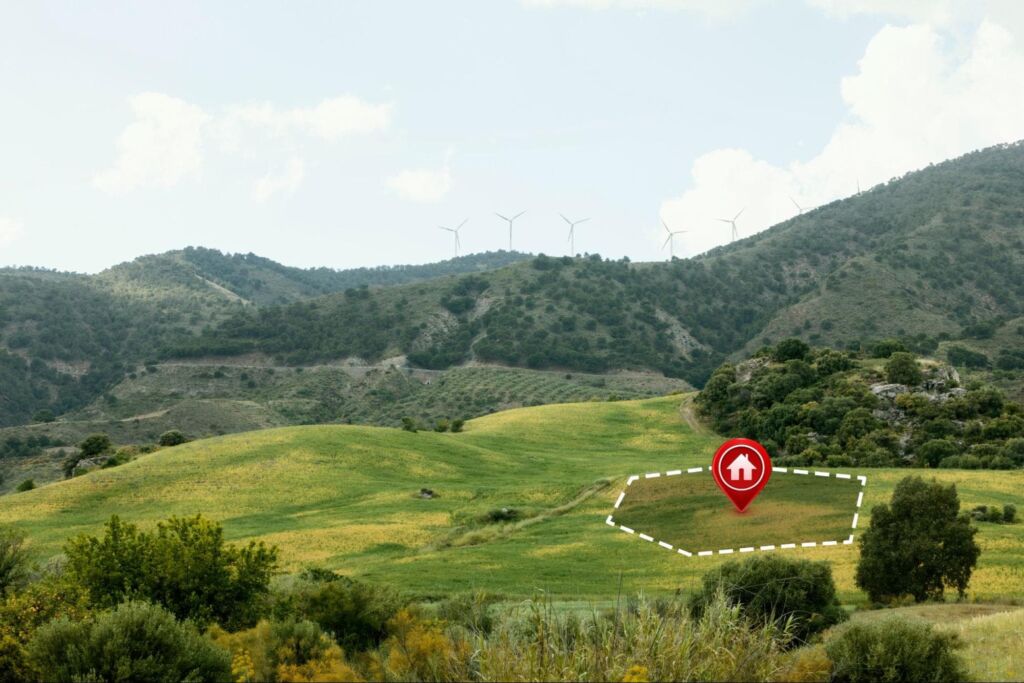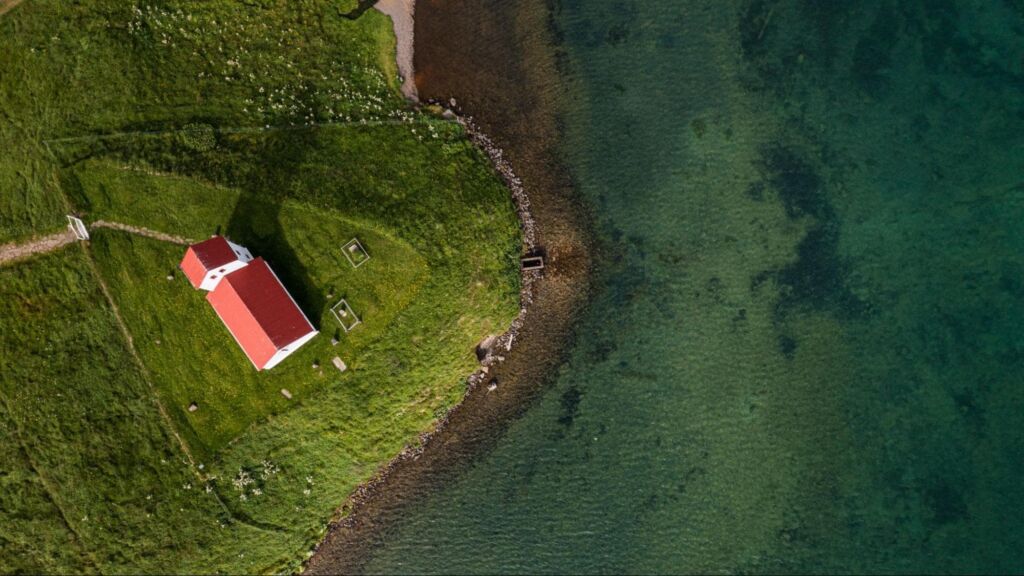Even though land investments seem to pose minimal risks, especially if the land is undeveloped, that sense of security is often misleading, and hence, you need vacant land insurance. Even when undeveloped, land can still face a range of risk factors that could result in financial losses. This is where vacant land insurance comes into play. This type of policy provides a unique layer of liability coverage. It protects landowners from lawsuits and claims that may arise due to accidents on their land.
In fact, any piece of land, be it suburban lots waiting for construction or wooded mountainous regions, can make its owner a legal target. Even hikers, off-road vehicles, and different wildlife pose a risk. While many landowners neglect to insure vacant land, assuming there’s nothing to cover, the financial consequences can be enormous when proper insurance isn’t in place.
Vacant land insurance works to ensure protection from liability claims while the land is still retained in full ownership, giving the landowner peace of mind, coupled with protection. This way, landowners can navigate various legal hurdles without needing to sell off an appreciating asset.
Those possessing undeveloped real estate should be aware of the considerations regarding this type of insurance coverage.
The Scope and Purpose of Vacant Land Insurance
Vacant land insurance falls under the category of liability insurance as it protects against claims the landowner may face due to injuries and damages on the property. Unlike home or building insurance, which has provisions for personal belongings, this insurance policy only focuses on the land and its legal risks.
Essentially, insurance covers third-party bodily injury and property damage on the land. This includes a variety of activities, such as hikers getting injured by uneven ground or dirt bikers colliding with trees. If injuries happen and the landowner is deemed to be negligent or liable, vacant land insurance will help pay for legal costs and medical bills, along with settling disputes.
While one may think that an isolated piece of land does not attract people who would get hurt, the truth is that injuries happen, often unintentionally. Moreover, in some jurisdictions, landowners can be sued even if the injured person was a trespasser.
Thus, obtaining insurance for unoccupied land is more than a mere formality, it underscores the commitment of a landowner to safeguard their property.
This task becomes crucial where the property is subject to being visited by other people, with or without the permission of the owner. For example, properties used for hunting or fishing pose more risk and so require greater protection.
Who Needs Coverage for Vacant Land?
Not all owners of vacant land need insurance, but many do. The risk may be low if the land is completely inaccessible and fenced off, with no foot traffic. In practice, very few properties are that remote. Most even seemingly remote parcels are likely to attract the attention of curious explorers, wildlife enthusiasts, or unauthorized vehicular traffic.
Individuals who inherited land or purchased it, anticipating future development, often seek vacant land insurance. These properties may remain undeveloped for many years, but there is a liability risk as long as the title deed is in the owner’s name.
Land that is temporarily unoccupied, such as a lot awaiting construction or a parcel between renters, may also benefit from this type of policy, at least until traditional homeowners or builders’ insurance takes over. Some policies with flexible coverage are especially helpful for landowners who find themselves in transitional phases.
Family and friends of landowners who use the land for recreational activities may need insurance. Injuries, even within a restricted circle, can be costly to defend legally. With vacant land insurance, the property owner is safeguarded regardless of the relationship to the injured party.

Things That Influence Cost and Coverage of Vacant Land Insurance
Like any insurance, there are options that will fall under vacant land insurance. Each of these will have different limits and costs. Insurance companies will look at the property’s size, location, use, and risk exposure in determining a policy.
If a property spans multiple acres, property size may be of importance. For example, steep hills, cliffs, or dense forests could pose a heightened risk of injury. There is also the chance that larger parcels would be viewed as more expensive, as they pose a higher risk.
Equally important is the location of the property. Consider a property that is located near residential homes. Such a property may attract greater attention from children and pedestrians compared to a rural setting. Certain areas may have greater thresholds for legal liability and would need more generalized coverage.
Permitted use of the land remains of great importance. Regular campers, hunters, or those leasing the land may not classify it as “vacant.” Such permits or leases are often bundled with some form of insurance policy, sometimes classified as commercial insurance.
Security features can impact premiums as well. Restricted access signage, fencing, and barriers are considered protective measures that reduce risk exposure to the land, hence lowering insurance risk. Insurers are more willing to provide policies with lower premiums under these circumstances.
Limited coverage amounts set by most individuals and insurers usually differ. However, a majority of policies issue a liability limit of between $100,000 and $1,000,000. Especially for truly vacant land with minimal public exposure, such conditions tend to reduce the premium compared to other forms of insurance.
What Vacant Land Insurance Usually Protects
Insurance revolves around third-party liability and generally covers claims made by users of the land for injuries sustained while using the land. Coverage typically includes a few common scenarios, but these details depend on the provider.
Insurance may apply to the medical treatment and legal expenditures for some events, like a hiker breaking a bone or a cyclist falling into rough terrain. In addition, vacant land insurance may pay for damages caused to personal vehicles, like a branch falling and smashing a car.
Regardless of whether the landowner ends up being deemed at fault, some of these policies can cover costs for defending claims, which easily run into thousands of dollars in legal costs, making this form of coverage vital.
It is important to note that vacant land insurance does not apply to parcels of land with existing structures. The presence of a small barn, a cabin, or a shed means that the property is no longer considered vacant. This would mean that the landowner would have to seek a different type of policy that covers the liability for the structure and the land.
In the same fashion, if the land is being leased for commercial purposes, commercial general liability insurance or commercial insurance would apply best to the land. In contrast, vacant land insurance is designed for undeveloped land that is devoid of human activity or construction.
Precautions to Take and Areas of Concern
Despite the protective nature of vacant land insurance, this policy is not well-suited for everyone. Different insurers tend to impose the same types of exclusions and limitations year after year.
A typical exclusion is any form of structure on the land. Even minimal structures, such as hunting cabins or sheds, can disqualify the land from being classified as vacant. It is crucial that all features on the land be provided during the application process so that claims are not contested due to insufficient disclosure.
Some policies may contain clauses that omit particular activities. For example, hunting is only permitted when the insurer has prior knowledge of it. Likewise, if owners lease the land for recreational or farming activities, those terms must be disclosed and sanctioned by the insurer; otherwise, the policy might be voided.
Certain risks pertaining to the environment may also be excluded. The insurer may not accept to cover land with contamination or hazardous terrain, or may require additional documentation. Such documents may also be accompanied by restrictions in relation to land that is in close proximity to flood zones, industrial areas, or protected wetlands.
It is equally important to know what your policy does not cover as it is to know its benefits. The services of an insurance consultant should be sought, and the fine print examined in detail in order to attain complete coverage.
Steps To Take In Selecting a Policy for a Vacant Piece of Land
Determining the answer to the question of what kind of vacant land it is comes first in selecting a policy. Begin assessing whether the land indeed remains vacant. Activities such as having structures, leases, and other active uses would necessitate more complex insurance options.
Also, consider the proximity of the property. Is it located close to a neighborhood? Does the area receive foot traffic or visitors for recreational purposes? Are there any natural hazards like cliffs, ponds, or wildlife that could potentially lead to an accident?
After determining the key risks, evaluate different coverage options from various insurers. Pay attention to what is and isn’t included in the coverage, the deductibles, and the pricing. Be clear about how the land is used, and explain ambiguous terms like seasonal use or infrequent camping clearly.
Some insurers treat vacant land as an addition to a homeowner’s policy, while others classify it as a standalone policy. In some cases, it might be easier and more cost-effective to bundle land insurance with existing policies.
These requirements can vary greatly from one area to another. Certain areas may mandate liability coverage for specific parcels of land, especially if they’re deemed public or semi-public spaces. Local brokers tend to know best about these local rules, and they can assist in finding the most appropriate policy.
The Benefits of Having Insurance for Vacant Lands
Not having insurance on a piece of unused land may save money. However, using such a strategy may lead landowners to incur unexpected costs. Even without being present on the site, individuals can incur unplanned medical and accident-related costs due to lawsuits.
Land increases in value with time. Protecting investments through vacant land insurance mitigates intricate legal issues arising from complications in the future. Also, insurance protects from the risk of rendering an asset into a liability, which can be an invaluable advantage due to rapid development.
For individual investors, insurance provides a necessary protective layer that helps maintain financial risk during acquisition while construction is in progress, making it vital during that phase. For long-term investors, insurance aids in providing the sense that the investment will remain untouched, granting enduring tranquility.
As previously mentioned, vacant land insurance fortifies a knowledgeable strategy towards land ownership. The insurance on vacant land demonstrates ingenious and responsible ownership and underlines the merits of vacant land insurance.
Gain Enough Knowledge With The Land Method
You can learn to protect your investment by educating yourself before spending a fortune. At The Land Method, we provide the knowledge you need to learn more about real estate. If you are looking to hold land for prospective development or seeking to reduce exposure to liability risks, we have all the information you need.

Conclusion
While vacant land can appear as a low-maintenance and low-risk asset, this perspective can easily be misguided. Even though land is devoid of structures, there are still liability risks associated with land ownership, and the consequences of an injury or lawsuit could be financially devastating.
Vacant land insurance provides a crucial safety net for landowners who wish to shield themselves from unforeseen claims, ensuring that the landowner can preserve the value of the land over time.
This type of insurance offers protection to landowners from numerous risks associated with ownership, including litigation costs and medical expenses. Safeguarding your land and financial future is possible by understanding how policies operate, what they cover, and how to choose the optimal plans.
Frequently Asked Questions
Is vacant land insurance applicable to unvisited properties?
Of course. Even remote properties can face liability issues if trespassers get hurt on the property. This is due to the potential costs involving legal action and the insurance safeguards against unforeseen transformative expenses like medical bills.
What type of structures are allied with vacant land?
All forms of sheds, barns, and cabins, as well as any other similar structure, are considered buildings. Hence, if your land possesses such structures, it would not be deemed as “vacant” and would need a different policy.
Can an individual claim coverage for camping and hunting activities done on their land?
Not always. If someone wishes to partake in such activities, they should declare them during application processes, as not all policies permit recreational land use and may need additional riders or a completely different policy.
Would homeowners’ insurance be able to cover vacant land?
Sometimes. Certain homeowners’ policies allow extensions for undeveloped land, though not all policies provide this, so it is best to consult your insurance provider or broker first.
What is the price of vacant land insurance?
In this scenario, the size and location of the land influence risk factors. Despite that, basic liability insurance is still quite cheap and begins at approximately twenty dollars a month.
Ginis Garcia is a seasoned real estate investor with over 14 years of experience helping both new and experienced investors achieve their goals in the housing and land markets.
- Ginis Garciahttps://thelandmethod.com/author/thelandmethod/
- Ginis Garciahttps://thelandmethod.com/author/thelandmethod/
- Ginis Garciahttps://thelandmethod.com/author/thelandmethod/
- Ginis Garciahttps://thelandmethod.com/author/thelandmethod/


